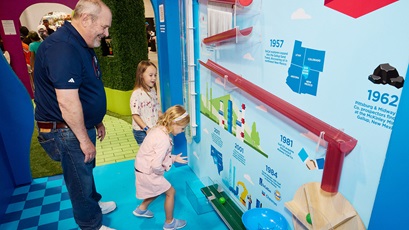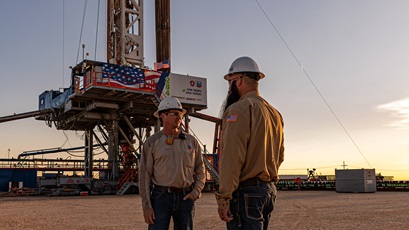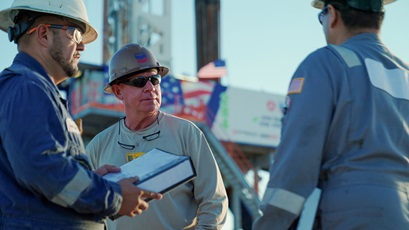people and community
tech patents illustrate dedication to innovation
2 min read | march 11, 2024
Huping Luo, a chemical engineer and technical leader at Chevron, commissions a new pilot-scale unit for a methane catalytic cracking project.
Innovation is critical to accelerating the evolution of the energy system. Some solutions needed to overcome technical barriers don’t yet exist. Others hold great promise but have only been proven on a small scale.
New patent applications can be a key barometer of innovation. Chevron is one of the leading patent holders in the industry. Worldwide, Chevron holds more than 4,400 active granted patents, with over 3,200 additional patents currently pending.
“Chevron has the capabilities and experience to continue to develop affordable, reliable, and ever-cleaner energy,” said Akshay Sahni, general manager of strategy and technology for Chevron Technology Ventures.
akshay sahni
general manager of strategy and technology
chevron technology ventures
patents and why they matter
Patents provide Chevron with the ability to control the use and development of the patented technology. These rights allow patent holders to market ideas or collaborate with others in a way that minimizes the threat of intellectual property (IP) misappropriation.
“Some of the innovation needed is ready to deploy at scale, and some is still in a nascent phase,” said Sahni.
akshay sahni
general manager of strategy and technology
chevron technology ventures
driving innovation
Huping Luo is one of Chevron’s inventors. A chemical engineer in Chevron’s Catalyst Unit at the Richmond Technology Center in California, Luo has contributed to 34 U.S. granted patents, with another 12 pending, while at Chevron.
Luo’s team is working on a technology to produce hydrogen with a lower carbon intensity. The International Energy Agency (IEA) notes hydrogen has the potential to play an important role in sectors where emissions are hard to abate, such as heavy industry and long-distance transport.
Though hydrogen itself is a lower carbon energy source, producing it can be carbon intensive.
Luo and his research team are advancing a methane catalytic cracking process that can produce hydrogen from methane with a lower carbon intensity than conventional methods. The team has patent applications pending on this technology and expects more to come.
huping luo
chemical engineer, chevron’s catalyst unit
richmond technology center
“Collaboration can reveal new or unique insights that can help us improve and advance the technology,” Luo added. “Patents also help build confidence among potential partners about our team’s skills and knowledge.”
step by step
Chevron leverages its various strengths to help find new solutions by:
- Fostering internal innovation.
- Promoting external collaboration with startups, universities, national labs and others.
- Trialing new technologies in its facilities to test, improve and deploy at scale.
By definition, inventions are novel. When searching for solutions, Luo and his team start by identifying a need, then spend considerable time experimenting, evaluating and improving the process, fixing flaws as they go.
Finally, when the team is confident in its innovation, it can file for patent protection. Once the technology is proven, it is ready to scale and be deployed broadly in real-world conditions.
topics covered
related content
-

 supporting STEM education in new mexico
supporting STEM education in new mexicopeople and communitynovember 18, 2025
-

 frontline innovations drive business solutions
frontline innovations drive business solutionspeople and communitynovember 12, 2025
-

 the people who power the US energy advantage
the people who power the US energy advantageour operationsnovember 06, 2025
-

 greeley stampede is riding high, with chevron’s support
greeley stampede is riding high, with chevron’s supportpeople and communityaugust 18, 2025
chevron email updates
Subscribe to our newsletter to receive news and updates.



